Field Review: Nauticam NA-D500 housing

Camera controls
If you are using a Nikon camera underwater and have not switched on the menu option “Release button to use dial” (f6 on the D500’s Custom Settings menu), please go and enable it now! This makes controlling your camera so much easier underwater. Simply put, it allows a push of a control button to access the function, the dials to then be used to adjust that function, and then a further push of the button to return the dials to their default positions.
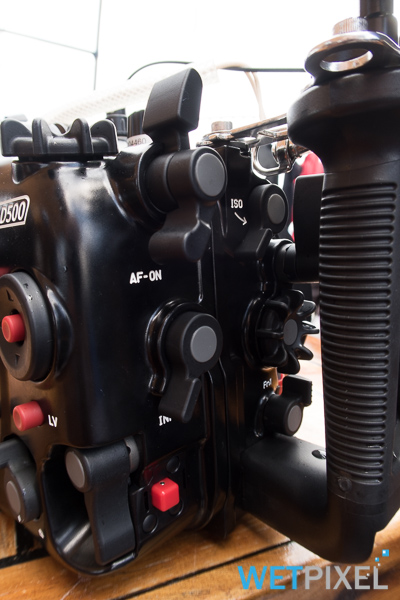
Nikon’s decision to move the ISO button from the top of the release mode dial on the left over to the right hand side near the on/off lever has created problems for all housing manufacturers.
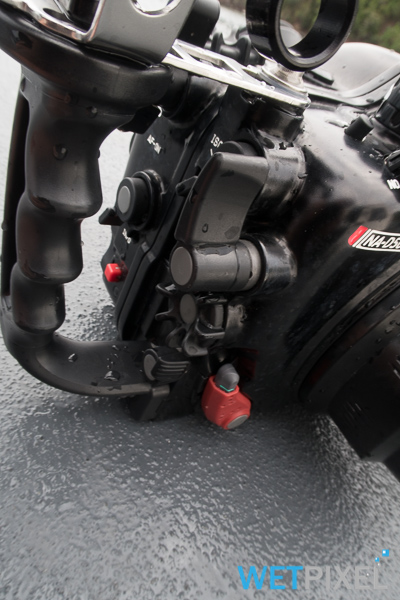
The right hand side is already loaded with controls and adding another creates a challenge. Given that ISO is very much used to control exposure with newer cameras, it is important that its control is accessible without needing to lift one’s eye from the viewfinder. I’m sure Nikon’s decision to move the control was motivated by this very requirement, but it has complicated the control layout for underwater use.

Nauticam has chosen to add a small lever to the right hand side of the housing, behind the shutter release, to access the ISO control. This means that the controls on the right hand are now: Shutter release, main command dial, AF on, video record, info button, sub command dial and Fn1. This makes for a very crowded space and I found that I could not access the ISO lever without removing my eye from the viewfinder. It could be argued that one will eventually build muscle memory to allow this of course

Nauticam provides access to almost all the customizable buttons on the camera (the exception being the Pre button). The Fn1 button can be set to disable the flash. This is really useful as it allows a quick way of disabling the strobe to shoot silhouettes for example. This control does not use the “Release button to use dial” option, so it must be held continuously while shooting.

The housing’s Fn1 control is a “stubby” lever, placed low on the right hand side. I have average sized hands and can use the control, but it is awkward. When shooting the lever needs to be pulled and held by the user’s pinkie finger, which I suspect for most of us is not that strong. It take some effort to do so, especially when wearing thick gloves.
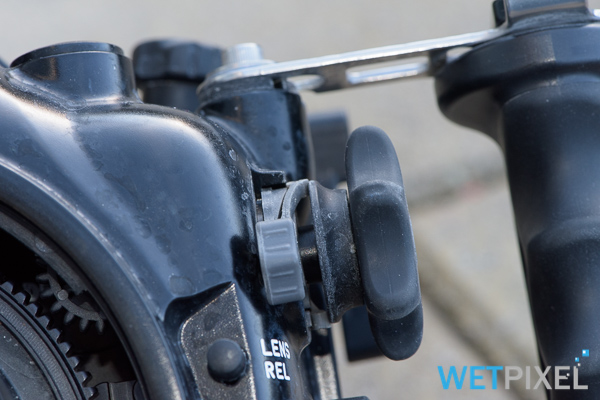
The Tokina AF 10-17mm F/3. 5-4.5 AT-X 107 DX is a go-to lens with the D500. This means that zoom gears are very much needed. Although not a unique feature, on many housings including this one, Nauticam offers a clever lever that allows the pinion gear to be lifted away from the gear while the lens is inserted. This helps significantly with ensuring that lens and gear are aligned correctly.
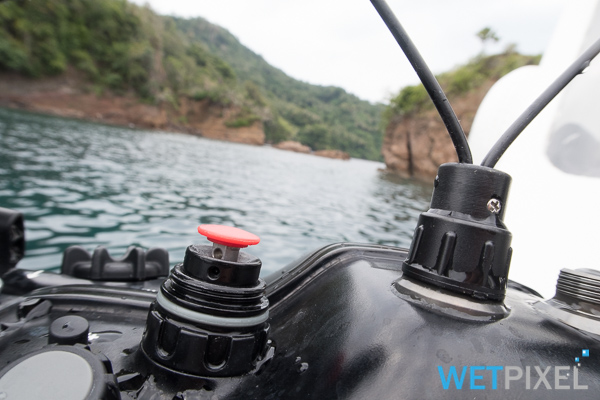
Nauticam Vacuum leak system
Nauticam’s temperature balanced internal vacuum monitoring system is well established in the market, and has a well-earned reputation for providing an additional level of security and peace of mind to the user. The housing that was supplied for the review had a new version of the external valve. The supplied valve was M14 threaded (although Nauticam also supply a 14mm to 16mm adaptor).
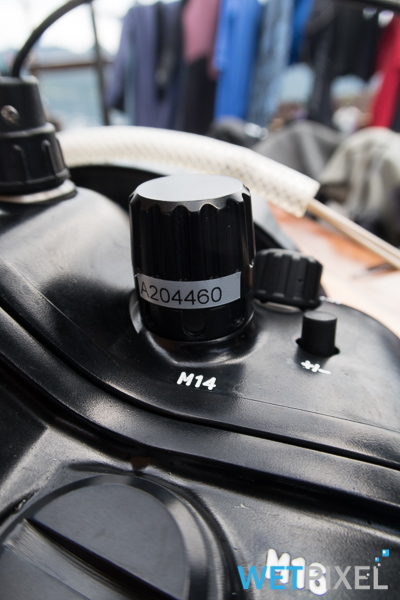
The new valve is very easy and smooth to use. There is an O ring sealed cover that screws down over the release valve which when removed reveals a red “button”. To create a vacuum in the housing, the pump simply pushes on over the button and to release the vacuum, the user simply presses and holds the button down for 30 seconds or so. It is really simply to use and avoids the issue of screwing or unscrewing the valve.

Another really useful feature incorporated into the vacuum leak system is a (blue) reset switch on the camera saddle. This allows the system to be enabled after a lens change. I often want to switch lenses during a day’s shooting and this obviates the need to disturb the main housing O ring.
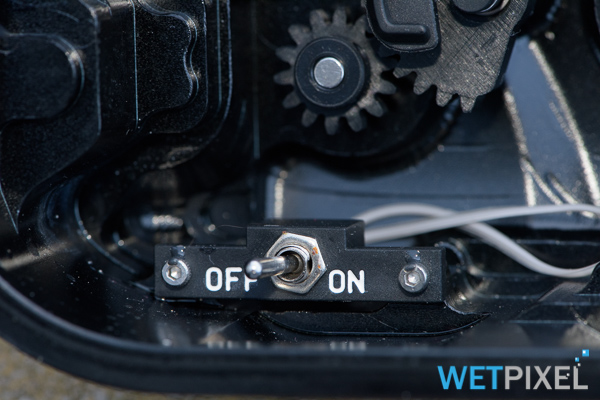
The vacuum system is powered by a CR2450 battery. Despite the vacuum leak detector being continuously active for over a month, there are no signs of the batteries being at all depleted.
- Introduction and underwater handling.
- Camera controls and Nauticam Vacuum system.
- Nauticam electro optical converter, Alex Mustard’s comments and conclusion.